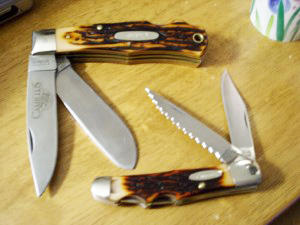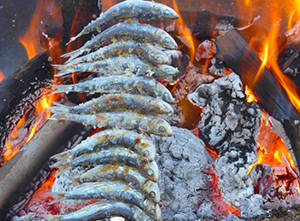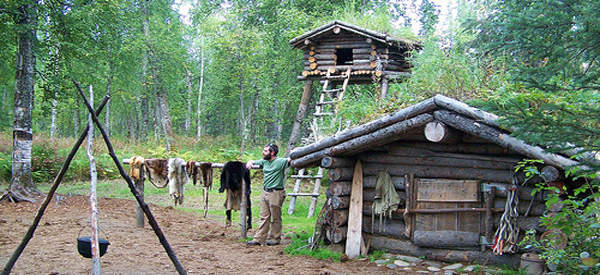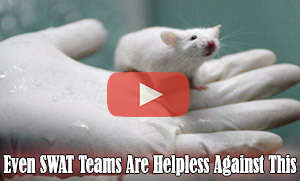by Pat Bellew
I always find it interesting that so many of the things, so many of the skills, and so many attitudes that are attributed to a “Crazy Prepper” mentality these days, were just a matter of course a few short generations ago. For instance, growing and canning food were once common place, and saw a lot of families through the great depression, today these are dying arts relegated to the status of hobby.
Not long ago, any boy over the age of 7 (and a whole lot of girls for that matter!) wouldn’t have dreamed of stepping out the front door without a pocket knife, today that aberrant behavior can land a kid in Guantanamo! Somewhere along the line, the trans-generational pathways that are supposed to convey traditional knowledge were severed in modern industrialized societies.
My early years were no different, I didn’t have grandparents, the traditional vectors of arcane knowledge, nearby while I was growing up. But I was incredibly fortunate just the same. When I was in my early teens back in the mid 80s, I fell in with a remarkable old gentleman who became in effect a surrogate in the realm of passing along knowledge of the wilderness. This man had been born in 1895, went to Alaska with his parents at the age of five, and was a veteran of both World wars. He knew things about surviving harsh conditions that the survival experts of today won’t rediscover for another 50 years. He taught me a lot about living outdoors, about trapping, hunting, fishing, living off the land, coping with adversity, and just plain getting by. In short, what today we might call survival skills. He didn’t think he had any special knowledge, to him it was all common sense and everyone else was lacking.
One of the most important things he taught me is that nothing is used until it is used up. He showed me this with an old worn out pair of jeans. At the time he was teaching me how to trap.
The first thing he showed me was how to make pan covers for steel jaw traps. From the old jeans he cut squares of denim just larger than the size of the jaws of the traps, on one side he cut a slit from the middle of the side to the center of the square. When the trap is set this cover is placed over the pan so that the slit opens over the trigger and the dog. In this way dirt and debris are prevented from falling under the pan and impeding the function of the trap. From the legs of the jeans and some twine, he made small pouches which could hold the bait for the traps. These pouches could be buried in strategic locations, or even placed in or hung from trees or shrubs above traps. These two simple tricks increased trapping yields significantly, and although I was not in a survival situation it should be easy to see that trapping could be important in such a situation.
But he wasn’t done with the jeans yet. From the scraps he cut small pieces, which he frayed. These pieces became fire starting tinder. He wasn’t a flint or fire steel guy. He was a staunch believer in Storm Proof Matches and an old Zippo lighter. He said that even in the Alaskan winters, if the Zippo couldn’t light it a hurricane match could, and plenty of good tinder never did anyone any harm either. From his years in Alaska he knew all too well the value of being able to start a fire, that it could easily become a matter of life or death. He had on him at all times a good supply of matches, the trusty lighter, and a handful of dry tinder material. I follow his protocol to this day, and would not be caught without at least two ways to make a fire in a pinch. I favor hurricane matches in any situation.
 For the task of converting old jeans to new uses, he only needed one tool, an old large trapper knife. He said it was the best pocket knife going. With its two different blade types it was good for just about anything you’d want a knife to do. It could field dress anything up to a deer, skin a fox, whittle a tent stake, or cut bait and old jeans. For bigger chores he had an old K-Bar fighting knife, which could “gut a hun” (sorry, his words, but remember his background. In two world wars he hadn’t had the best luck with Germans!), do light chopping, or be put on a stick for a spear. There wasn’t much he couldn’t do with those two knives! Once again, I follow his protocol and there is always a trapper knife folded up in my pocket!
For the task of converting old jeans to new uses, he only needed one tool, an old large trapper knife. He said it was the best pocket knife going. With its two different blade types it was good for just about anything you’d want a knife to do. It could field dress anything up to a deer, skin a fox, whittle a tent stake, or cut bait and old jeans. For bigger chores he had an old K-Bar fighting knife, which could “gut a hun” (sorry, his words, but remember his background. In two world wars he hadn’t had the best luck with Germans!), do light chopping, or be put on a stick for a spear. There wasn’t much he couldn’t do with those two knives! Once again, I follow his protocol and there is always a trapper knife folded up in my pocket!
On one occasion, he taught me how to “spit up some bait”. First he showed me the general principal of the thing. He spit in the shallows at the edge of a small pond, the spit was immediately swarmed by minnows trying to eat it! Next he got an old T-Shirt out of his pack, cut a pair of sticks with his K-Bar and fashioned an A-Frame dip net. He settled this net on the pond bottom and spit again. When the minnows gathered again he had me gently raise the net out of the water. I came up with a half dozen fat little minnows. With a length of light string, a safety pin, and a green stick he built a quick fishing pole, baited the pin with a minnow, and started pulling in pan fish!
 I was amazed by what he could do with almost nothing! With a bit of denim tinder and a hurricane match he got a fire going and we cooked our fish on sticks as quick as we caught them! To go along with the fish we had a salad of some of the edible plants in the area, in this case horse tails, dandelion greens, and miners lettuce. It was a great lunch and an important lesson, if you know where to look and what to do there is almost always a meal nearby! As the old man always said, there’s tricks in all trades!
I was amazed by what he could do with almost nothing! With a bit of denim tinder and a hurricane match he got a fire going and we cooked our fish on sticks as quick as we caught them! To go along with the fish we had a salad of some of the edible plants in the area, in this case horse tails, dandelion greens, and miners lettuce. It was a great lunch and an important lesson, if you know where to look and what to do there is almost always a meal nearby! As the old man always said, there’s tricks in all trades!
One of the most important things he taught me was to observe nature. Know the habits of the animals, including the fish! Knowing how the critters act will help you catch them, and it can tell you a lot about impending changes in the weather. Both these things are infinitely valuable in a survival setting, or just to get you in out of the rain before it’s too late. Observation makes you a better fisherman, a better hunter, a better trapper, and an all around better outdoorsman. All of which translates into a better survivor.
I learned an awful lot from my old friend. Skinning, stretching and drying pelts, how to work a gold pan, where to make a trap set, and how to spit up some bait to name a few. If you told him he was teaching me survival skills he would have laughed, everything is survival and all that is just how things are!
Some of the more important lessons:
- Nothing is used until it’s used up.
- Always be able to make a fire.
- A good knife is a solid foundation.
- If you can trap and fish you will never go hungry.
- Know the plants you can eat. Again, with the right knowledge you need never be hungry.
- Know the behaviors of wildlife, they can tell you a lot about what is happening or about to happen.
- Make do with what you have.
- There’s tricks in all trades.
Seems simple enough, doesn’t it? But it seems that so many of the simple old school solutions are being lost in time. And to be sure, common sense isn’t always common anymore, this applies to the art of survival at least as much as anything else and quite possibly even more!!
DIY TripWire Alarm Very Simple and Outrageously Loud
An insanely effective way to build a 5 year food stockpile (Video)
















long feather egarinrs / Thanks for an amazing submit, will study one’s others content. thanks for your thoughts with this, I soon became a trifle made an impact to by this post. Thanks again! You wanna make a great point. Portrays natures best by the excellent data here. I believe that in case a greater number of people considered it like that, they’d have a very better time period obtain the suspend ofing the situation.
Every boy I knew in grade school had a pocket knife. Nobody thought anything about it. Nobody used them in fighting either. Nobody kicked an opponent who was on the ground. That was unfair fighting and would get you the censure of all of your friends and enemies.
As itchy as it could be, wool is your best friend in a blizzard. Treat it with was, petroleum jelly or fat will make it water proof, wind proof and keep you warm.
Pat I really enjoyed your story. It makes me think of the things I was brought up doing and have forgotten over the years. Thank you